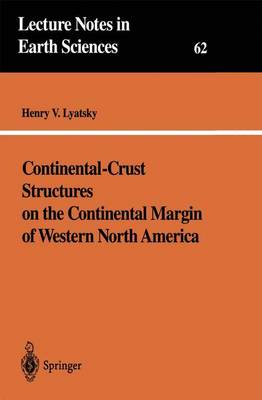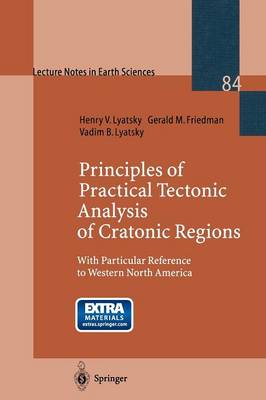Lecture Notes in Earth Sciences
3 primary works
Book 62
Continental-Crust Structures on the Continental Margin of Western North America
by Henry V. Lyatsky
Published 4 April 1996
The NE Pacific Ocean is considered the birthplace of many fundamental ideas for modern plate tectonics theory. In this book the orogenic belts of this region are discussed in a single, internally consistent tectonic concept. Geological information is considered the most reliable. Geophysical models are tested for compatibility with observable geological data. The new concept avoids force-fitting interpretations to preconceived assumptions regarding accreted far-traveled terranes in the Cordillera and continental-oceanic plate interactions in the entire region.
Book 84
Principles of Practical Tectonic Analysis of Cratonic Regions
by Henry Lyatsky, Gerald M. Friedman, and Vadim B. Lyatsky
Published 18 February 1999
Steep crystalline-basement faults, commonly indicated by potential-field anomalies, played a crucial role in evolution of continental cratonic platforms. In the Phanerozoic Western Canada Sedimentary Province, history of crustal block movements and warps is reconstructed from the distribution of depocenters, lithofacies and structures in structural-formational étages in sedimentary cover. Each étage is a rock succession formed during a particular tectonic stage; regional tectonic restructuring closes each stage, and the next stage represents a new tectonic regime. Practical tectonic analysis, based on observation of rocks and geophysical data, is a reliable guide for deciphering a region's geologic history and for resource exploration.
Book 86
The Cordilleran Miogeosyncline in North America
by Henry V. Lyatsky and Vadim B. Lyatsky
Published 19 August 1999
Steep crustal-scale faults, having their origins in the Late Archean and Early Proterozoic and trending NE-SW, which define the fundamental block lithospheric structure of the North American craton, are seen from geological and geophysical evidence to continue far into the interior of the Late Proterozoic-Phanerozoic Canadian Cordilleran mobile megabelt. This suggests that variously reworked ex-cratonic basement blocks underlie much of the Cordillera. The western edge of the modern craton is probably near the Rocky Mountain-Omineca belt boundary; the Rocky Mountain fold-and-thrust belt on the east side of the Cordillera is evidently rootless and overlies the undisturbed cratonic basement. Phanerozoic differences between the Cordilleran tectonic belts, resulting from a long, dissimilar, multi-cycle history of waxing and waning orogenesis apparent from the rock record, lie chiefly in the degree of indigenous tectonic remobilization and reworking of the ancient crust.


